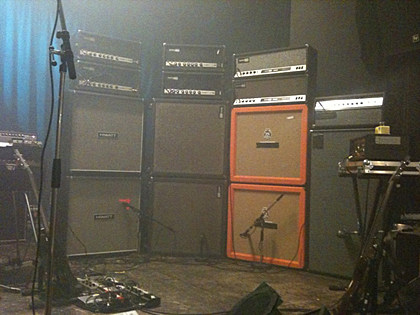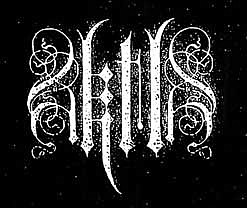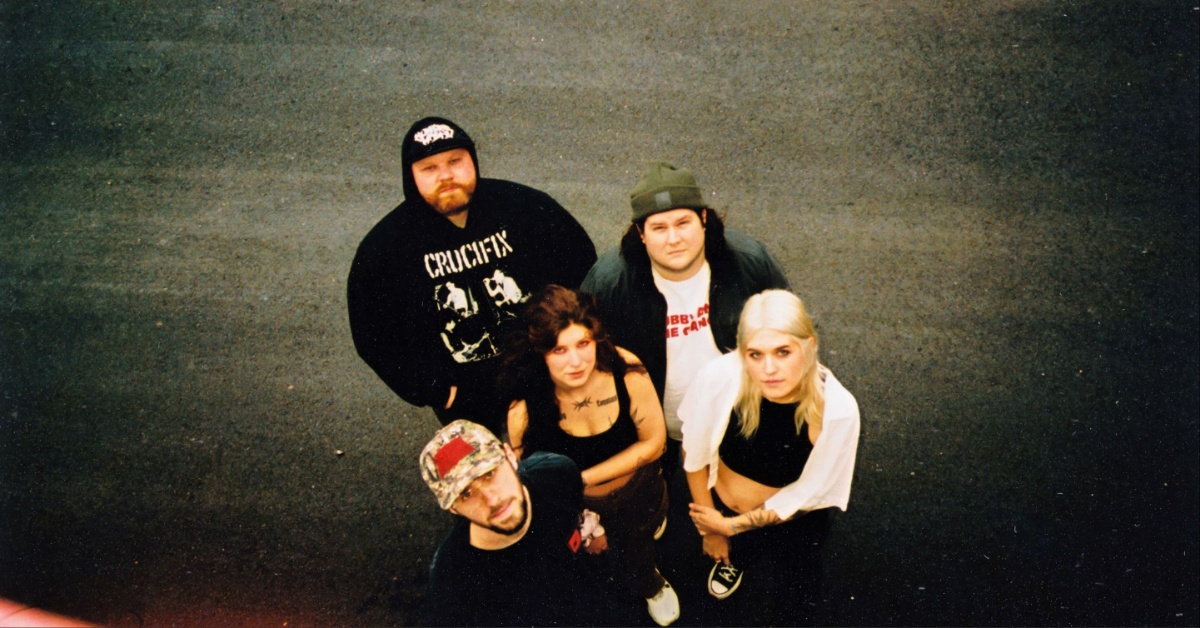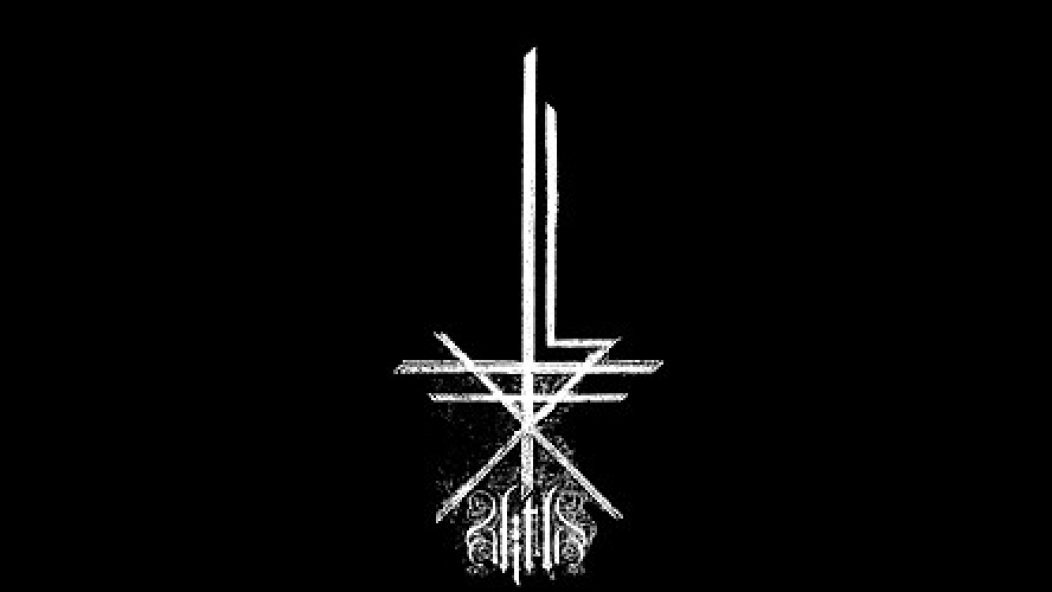
Interview: Stephen O'Malley (Sunn O))), KTL)
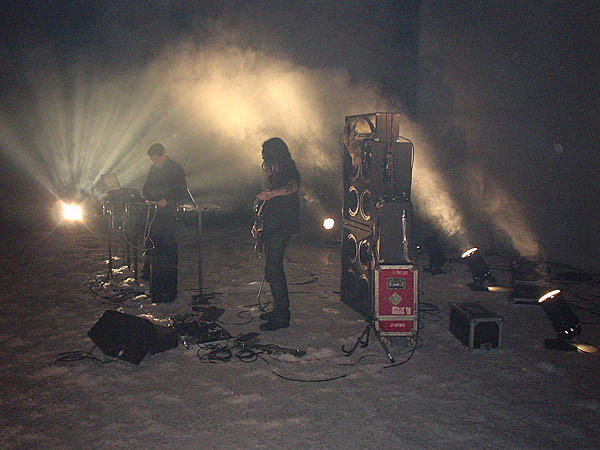
. . .
Two things are great about interviewing Stephen O’Malley: the man is both interested and interesting. He’s constantly thinking and talking about dozens of fascinating topics, from classical composition to architecture to history. When he talks, it becomes clear how these influences connect to his music. I spoke to him about his KTL collaboration with Peter Rehberg and why Trey Azagthoth might be a better role model than Lady Gaga.
. . .
You said you’re rehearsing today. Is that for KTL or something else?
I’m actually working in a studio today. I’ve got my days mixed up. [Laughs] I’m working with a theatre company this month, so I’m rehearsing for that. Speaking of KTL, it’s a theatre company called D.A.C.M., and KTL was actually formed to do music for a piece by the director of that company. Her name is Gisèle Vienne.
Right.
Peter Rehberg and I got together to do music for a piece that she was doing called Kindertotenlieder. She invited us to do it, so we started making music for this piece, and it was really productive working with Peter. We had a really good time doing it, so we decided to make it more than a soundtrack, that we’d make it a “band”.
Now, the music for that piece is played live. The piece, in its script, had a band in it. After a few months, we started getting offers to play concerts and stuff, so we were like, yeah, let’s try and do some concerts. And the director…she’s really cool and supportive of us taking some of that music outside [of the theatre project] as well. One of the first offers we got was opening for Throbbing Gristle.
. . .
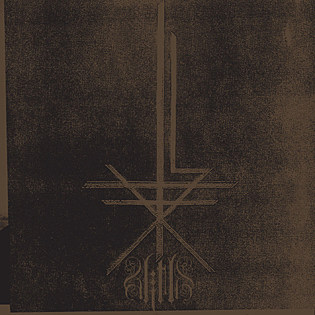
. . .
KTL1 and 2 – how were those recorded? I know you guys recorded part of 2 in an abattoir.
Well, it’s funny because in France all these old buildings are here. I’m from Seattle, you know? There’s nothing older than fifty years. [Laughs]
Yeah, I’m from LA originally.
Yeah, so you know. The historical building thing is limited, especially on the West Coast. But in France, there’s shit everywhere. There’s castles, old abbeys, and forts and stuff from all of these different periods of time, and they’re sitting there. Sometimes people live in them, you know? You can buy these places to live in. But, you know, you have to be pretty wealthy to be able to keep it up.
What happens is a lot of these places get turned over to the government, and the local government has to take care of these buildings. They might be historical sites, or they might be stuff that they can’t take down. We played a few times in these old submarine bases. The Nazis actually made all these submarine bases along the Atlantic seaboard in World War II. These things are fucking huge, like monolithic. They’re so big, and the walls are so thick, and the concrete and steel that they’re made out of is so intense that they can’t be taken down.
Another place we worked in was an old manoir, which is like an old mansion basically, except from the 14th century with towers and all kinds of crazy stuff. And, you know, for me, I’m a metalhead [laughs]; I’m into medieval times and all this stuff, so it’s really interesting. Besides the historical aspect, it’s also inspiring. I mean, I love fucking doom metal, and it’s pretty metal to be able to record in a castle or a fort or something like that.
. . .
. . .
Let me ask you a bit about the technical side of recording with KTL, specifically KTL4. The sound is really dry; it sounds like you’re recording in a studio. It sounds like the electronics are recorded direct, and maybe there’s a close mic on the guitar cabinet. But there’s all this atmosphere, all this exterior sound that sounds like it’s beyond what’s being played. What was the production aesthetic?
Well, that record is the first record we did outside of this whole theatre thing, and we wanted to work with Jim O’Rourke. In order to do that these days, you have to go to Tokyo where he lives, ’cause he doesn’t go anywhere else anymore. His ears and his way of recording are his own; it’s very much his personality.
We didn’t really record differently than we have before. Most of the electronics on the other recordings were from a DI [direct input, i.e., no amplification,] and beyond that they’re simply files. The guitars are always recorded live.
On KTL4, we also used amps for the electronics, which sounds like the opposite of what you were expecting. Through doing the live stuff with Peter, I couldn’t hear him on stage because I play really loud. I’m sure it was rockin’ in the PA, but I was never really into monitors. So I started encouraging Peter to play through bass amps, like Ampeg SVT’s and stuff, and now he’s really into it, and he’ll play with two SVT stacks when we play live. That changes the vibe of his sound, so by the time we got to KTL4, we wanted to do some of that live amping of electronics on the record.
A lot of that record has to do with the room of the studio, too, the room mic and the room itself. The studio is this basement studio on the west side of Tokyo. It wasn’t too big, but it was underground. The room has brick walls, so the live recording was pretty essential. I don’t know if we did too much stuff simultaneously. In fact, it was more traditional, where we were improvising separately and then putting stuff together later with Jim. Also, there’s the track [“Paratrooper”] we recorded with Atsuo from Boris.
KTL – “Paratrooper” (excerpt)
[audio: KTL_PARATROOPER(EXCERPT).mp3]
That track is crazy!
We had him record separately and then essentially arranged the drums like a drum machine where we set up a grid and kind of reprogrammed what he played and looped certain sections in order to get that dislocated feeling and sort of overlapping synchronicity – that sort of slipping feeling that that track has. It’s a really challenging piece to listen to. All that timing stuff was all programmed very specifically.
That was another thing in that we’d never really had drums before. We had always just been guitar and computers. So that was opening things up in a certain way.
What you’re doing, what Atsuo’s doing, and what Rehberg’s doing are so rhythmically distinct from each other, and the way they all line up and don’t line up at times, it just starts fucking your head up.
Yeah, exactly. I think that track is a pretty obvious reference to the Swans’ Cop EP. I’m really interested in the perception of rhythm and the way “rock” music needs to be in time with itself. There’s an illusion that if things aren’t in time or on beat, then something’s wrong.
KTL is abstract music, and I’m not just saying that to get off the hook. It’s an experiment in trying to open things up with improvisation. And working with Peter’s allowed me to dive into the guitar further than I had with other things I’ve done. His perception of what music is and how it should be made, what is “right” and “wrong”, is so different than anyone else I’ve played with, and it’s really opened my mind up. I can basically do whatever I want on guitar, and if the vibe is correct, then the music is working.
. . .
I think experimentalism is a little bit on the run in music at this time. Actually, a couple of friends coming back from South by Southwest were saying, “Man, when did things get so conservative?”
Is that a question?
Sorry, that’s just a statement.
I don’t know, I think there’s amazing music out there, and I never really fall into the cynical trap, or at least I try not to. There’s an ocean out there, man. You can paddle out there and discover new stuff, new islands of styles and artists. Sometimes people find an island that they like and just sit on it and say, “Nothing else is as cool as this island. I’m so comfortable here”. That’s fine. I’m glad you’re into what you’re into.
The amount of music you can access right now is insane. There’s tons of experimental music out there. In fact, I would say most music you can access is either made by non-musicians,or it’s made by people trying to break out of their own restrictions. Because you can – you can just do it for nothing. I would say the whole DIY thing right now is stronger than it’s ever been.
I see what your friend is saying, though. People are pretty conservative with music. I think it’s a matter of perspective, because whatever’s underground and cool five years ago is usually what’s becoming mainstream now. It’s been that way the whole time. Rock ‘n’ roll, punk, hip-hop, rave, metal – it’s always like that. Whenever something gets in the mainstream, it seems conservative because it’s actually an older form. That’s always been the case.
. . .
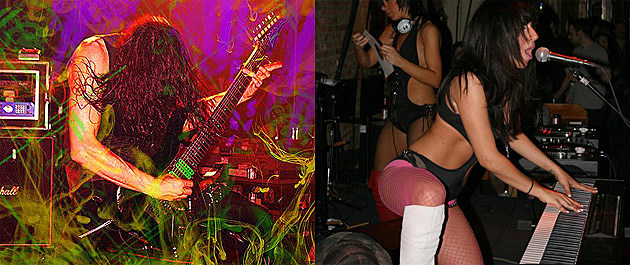
. . .
I didn’t necessarily want to give the impression that music is only conservative right now. It just seems like things are being pulled in lots of different directions. We’re in a time where Lady Gaga is the biggest thing out there, and Harvey Milk’s new album is being streamed on NPR.
You could also argue that Lady Gaga is experimental with her videos and stuff. It’s also the most nihilistic music out there, don’t you think?
A little bit!
No, it’s really…not a little bit, it is! What’s more nihilistic: Morbid Angel or Lady Gaga?
Yeah, well, Morbid Angel has a little more hope for life as it is.
I think Trey Azagthoth is full-on pro-life. He’s all about empowerment. He was into…
Deepak Chopra.
Yeah, and those motivational speakers he was into a few years ago. Who was that?
Tony Robbins.
Tony Robbins! [Trey] was totally into that. He really embodies doing as much with your life as you can and LIVING. I think Lady Gaga’s fucking…nihilism. It’s an extremely cynical view. It’s strategic and harsh. Lyrically, the message is just…death.
That’s a really interesting and insightful point.
Well, look at Harvey Milk: it’s three guys who’ve been working for almost twenty years to do what they want to do, and they never gave up. I mean, it’s been the same years ago, though I guess Joe Preston was in there for a minute. Look at Creston – that is his life, he’s a lifer. It’s about life. It’s not about a huge, corporate, multi-national company creating an icon for people to worship, whose entire message is about consumption and absence of truth.
I think it’s good, though, on both sides. At least Lady Gaga is obvious [in her intentions and message]. It’s obvious to me and, I think, other people, too. It’s not a pop star trying to be like, “Oh, I’m going to work with some African causes to seem more humane”.
. . .
KTL live
http://www.youtube.com/watch?v=qxyXSJKr2bU
. . .
I know you’ve talked before about how the Sunn O))) live experience is basically regressive. You’re trying to tap into a more primal side of the mind. KTL seems different. It seems like you’re tapping into higher brain functions. What is the feeling of playing live with that band?
Well, there’s a few things I disagree with in your perspective. I don’t consider Sunn O))) to be regressive, but I do think it taps into something more fundamental. The music and experience kind of resembles meditation in Sunn O))). KTL is improv music. Sunn O))) has improvisation in it, but live it’s based around a loose structure. KTL is pretty much all improv. We’ve tried to have set lists based on track titles, but it always ends up really different.
I’m really into improvisation, and I think it’s a skill worth developing. Quite simply, it allows you to go into new places. It’s also really challenging, because you need to constantly be aware of what you’re playing, and what everybody else is playing. And you have to be able to integrate with it pretty quickly, even if it’s so-called “minimalist” music. You have to be listening quite deeply to what the other players are doing.
It’s very difficult to feel satisfied with improvisation on the level of feeling, “Yes, we did a super-powerful show”. In Sunn O))), it can seem victorious. Not only is it about trying to get into a state of mind, but it’s about trying to complete the task, executing an arduous piece of music. [Whereas] KTL could be just 20 minutes of improvisation, or it could be two hours. It’s about being aware of what’s happening, not going, “Uh, well maybe it’ll be better in five minutes”, or “It’s kind of stupid right now”, or “What am I playing? This is retarded! Is he even listening to what I’m doing? What is he playing?”
Derek Bailey has this great book on improvisation. He’s the perfect example of a great improviser, right? His viewpoint on it is very interesting: why do you have to intergrate? Why can’t you just do whatever you want? It’s only your perception anyway, and it’s only their perception. Why do you have to follow your perception at all? That’s another reference point for that track with Atsuo. Why don’t we all just play three things, and see what it turns into?
KTL – “Theme” (excerpt)
[audio: KTL_THEME(EXCERPT).mp3]
When you guys perform, is Peter Rehberg taking a feed from your guitar and manipulating your signal?
Yeah, a lot of times we run two signals, so we run one of those from my amp mic into his computer. Like if we do that track “Theme” [from KTL2]. That’s processed guitar.
It’s so layered, but then you can hear the one basic guitar part underlying it all. There’s all this density and build, and then it suddenly gets stripped away to the basic track, and you realize that’s the root of all these crazy harmonic layers. Is that being done live when you recorded it?
That song is actually the theme of the theatre piece. When KTL plays live the theatre piece, that’s part of our set, and that’s completely different from a KTL concert. Not much improv. The theme repeats pretty close to how it’s written. [Peter] processes the guitar riff live. I’m also building up my own effects processing that I’m doing live as well, so there’s a few different layers of manipulation to the core melody.
Thanks for clarifying about “Theme” and how it’s used in Kindertotenlieder.
It’s pretty brutal. It’s really loud and pretty full-on when we’re doing the theatre piece. We’ve got the full stack, the Fender Twin, and the bass rig. In the audience we sometimes have the curious Sunn O))) fans or some electronic music people, but generally it’s not our audience or people who know our music. That’s pretty demanding, too. People get it, though. They get that it’s supposed to be this wash, this whiteout.
. . .

. . .
It’s interesting that it’s this soundtrack, and that’s the only way that I and most listeners in the States have experienced it. What are people seeing at a Kindertotenlieder production? I’ve seen some stills of the beast puppets, but I don’t really have an idea of what’s going on visually in that piece. Could you share?
I really shouldn’t answer questions about what the piece is, because I’m just the musician. It’s complex – it’s way more sophisticated than the music, I’ll tell you that. [Laughs] The music is just one part of this thing. It’s not just about the music, you know what I mean?
Sure.
It’s a pleasure to be a part of it, but it’s complicated at the same time. When we were making it, I got to this point where I thought, “Why the fuck am I involved with this? I don’t understand it”. Talk about timing control. Gisèle has this really amazing way to craft time within her pieces. It’s really inspiring. I hope I can touch on that with my accompaniment somehow. In the theatre piece, once I understood the timing – which took a while, a few months of working on it with her and everyone else – then I realized why I was there. It was something I detected subconsciously and couldn’t really understand until later.
If there’s a flaw in those first three albums, aside from the negative criticism which is normal for any music, I think it’s that they don’t come across as a soundtrack. They’re albums, of course, but the context creates so much more than just the music. We just needed to document everything and release it like that. There’s a long relationship between [label] Mego and this theatre company. Peter’s done a lot of work with Gisèle Vienne. It needed to be done. It was significant. I don’t know if it comes across that way, though. It comes across as sort of a side project or an improv thing where we got together and made these black metal-influenced electronic tracks. But it’s not, it’s actually soundtrack music, and we had to find that area where that style was.
. . .
Excerpt from Kindertotenlieder/KTL performance
. . .
Being somebody who listens to soundtracks a lot, and also being unfamiliar with that theatre piece, I would say it does come across. It suggests its own visuals. It’s very imagery-heavy music.
Well, I’m glad to hear that. It’s psychedelic music, that’s for sure. It doesn’t exist in the way of, “Well, maybe we can take this to South by Southwest, and maybe KTL can play a showcase or something”. [Laughs] It’s a different type of thing altogether, and that’s why we haven’t toured much. It’s not like we’re going to get in a van and do two months of touring the States, although that would probably be pretty fun to do. And Peter’s background is very different from mine. I come from a hardcore and metal background and the lifestyles that surround it in terms of what you do with your bands. Peter comes from European power electronics. [Laughs] There’s a lot of similarities on the DIY level in terms of ethics, but how you actually do things is quite different. It’s a cool crossover. It really works for us.
In a way, it must be a relief to not have to think about how to define the project, because it does exist principally as the accompaniment to a theatre piece.
Yeah, it’s like, why should we need to define it? Really, the concert performances are now a branch of the original version of this project. We’re lucky that people are interested enough to want to see that.
What were the reactions when you first started taking it out on its own, independent of the theatre piece? Obviously people were initially approaching you guys for the other things you were involved in.
It’s pretty challenging to listen to. It’s not built for entertainment, and you have to be able to listen in a certain way.
You have to bring something to it.
Yeah, you have to be attentive if you want to enjoy it, listen deeply. Sunn O))) is the same way, but Sunn O))) has this other thing going on visually which also attracts people for different reasons. KTL will have pretty much smaller audiences. [Laughs] But the people who come are really interested. They know a lot about it, they try to understand it on a deep level. Occasionally, we’ve had some stumbling blocks with promoters who think every Sunn O))) fan is going to come to the concert.
And it’s going to have the same draw…
Yeah. But it’s a different band, it’s different music. It’s not an offshoot of Sunn O))). So that’s just naive business practice. We’ve toured in Japan twice, and that seems like a good place for this kind of music. It can be seen as noise or experimental music. I don’t know if either of those tags are correct, but if you’re into noise music you’ll probably be able to get into KTL. There’s a lot of open-minded metalheads who are totally into it, too.
. . .
. . .
Is there a conceptual idea for the next KTL release?
Yeah, I’ll tell you about it. Another thing we did was a soundtrack for The Phantom Carriage, which was this silent film from the 1920s. There was this guy in London who worked in Tartan Films. He liked our music that we’d done in the theatre piece and as the band KTL. So he commissioned us to do the soundtrack to the film. It’s an early horror film that was also a platform for a lot of editing techniques that were first unveiled to the public, such as layering film – things that don’t seem like anything special nowadays, but at the time they must have been incredibly powerful for people to see. We did that, and we were asked to perform the soundtrack live to the film. So we did that a few times. And we were asked to do another film that way. The second offer came from the Louvre Museum in Paris.
Oh, wow!
Yeah, so that was a pretty huge offer. Every year they have a guest curator who’s a visual artist and usually a director of film or opera. This year they invited this director named Patrice Chéreau, who’s a French director. He did Wagner operas in the ’70s, and he was the first director to change the set from the neo-classical style to a more modern look. So he did Nibelungen [Wagner’s “Ring Cycle” opera] set in industrial Manchester, which was controversial at the time, but it also opened the door for modern opera.
Somehow this guy saw the film we did and liked the soundtrack, which is bizarre. I mean, it makes sense, but it seems bizarre that people on that level would be paying attention to that kind of underground stuff. We got invited to do a film called Sunrise by [F.W.] Murnau, a German director, which is going to be great. We’re going to record in September at a studio in Stockholm that has a bunch of old modular synths, so it might be more synth-based. That may or may not be the next record, but it probably will be.
Murnau is the Nosferatu director, right?
Exactly. They actually asked us to do Nosferatu and we were like, “No!” [Laughs] I love the different versions of that film, so I don’t want to do that after so many good versions have been done, including Popul Vuh.
For the Herzog version.
Yeah, exactly.
Well, thanks for your time, Stephen.
Yeah, thank you.
I hope KTL makes it to the States at some point again.
Well, there’s a guy in Seattle, an old friend of mine named Demian Johnston. He’s actually going to release this multi-cassette KTL live thing. He’s been asking us to come out and tour with one of his bands on the West Coast. I’d love to do a tour on that scale where we’d be playing a lot of smaller cities along the coast.
. . .
